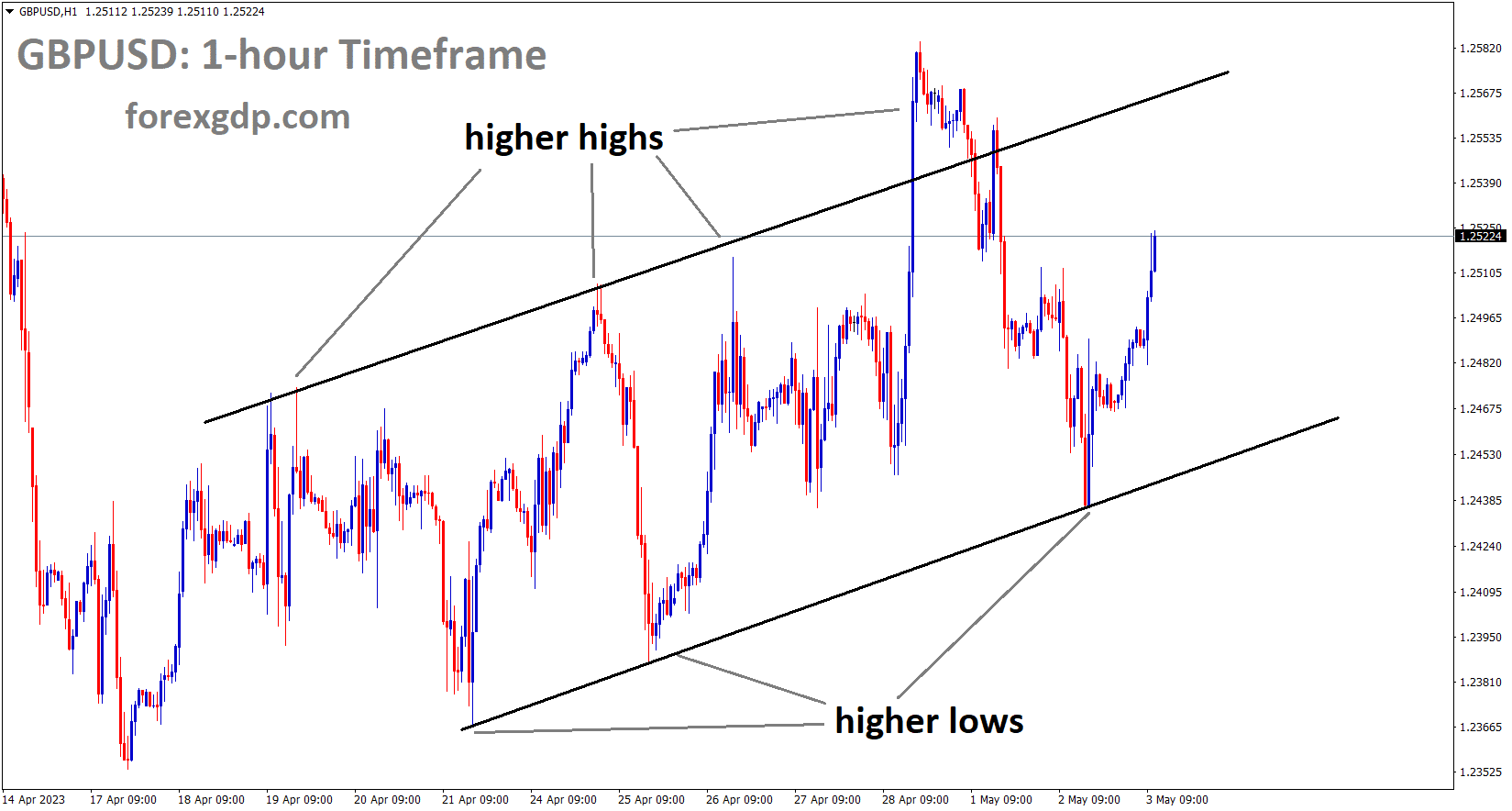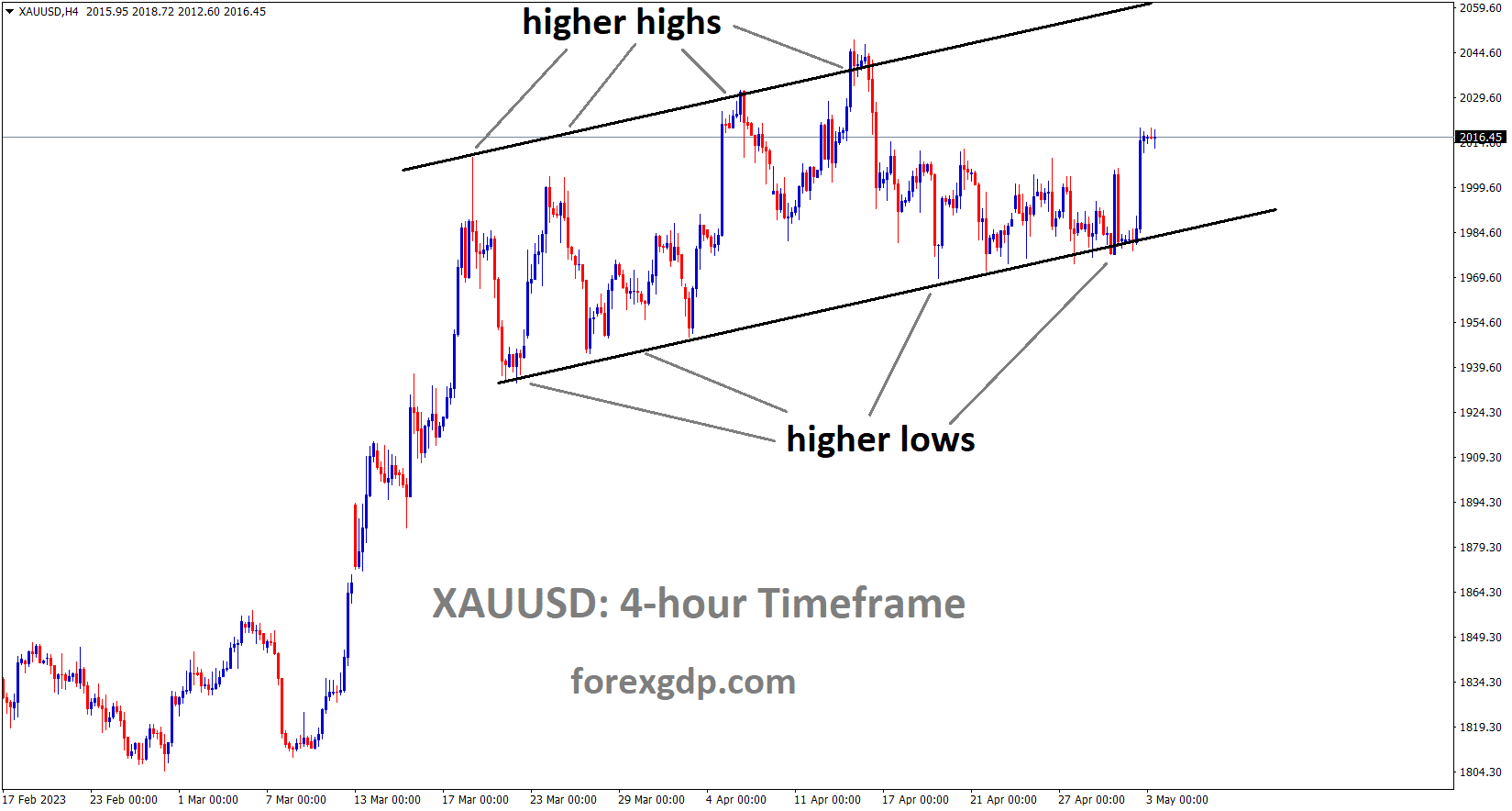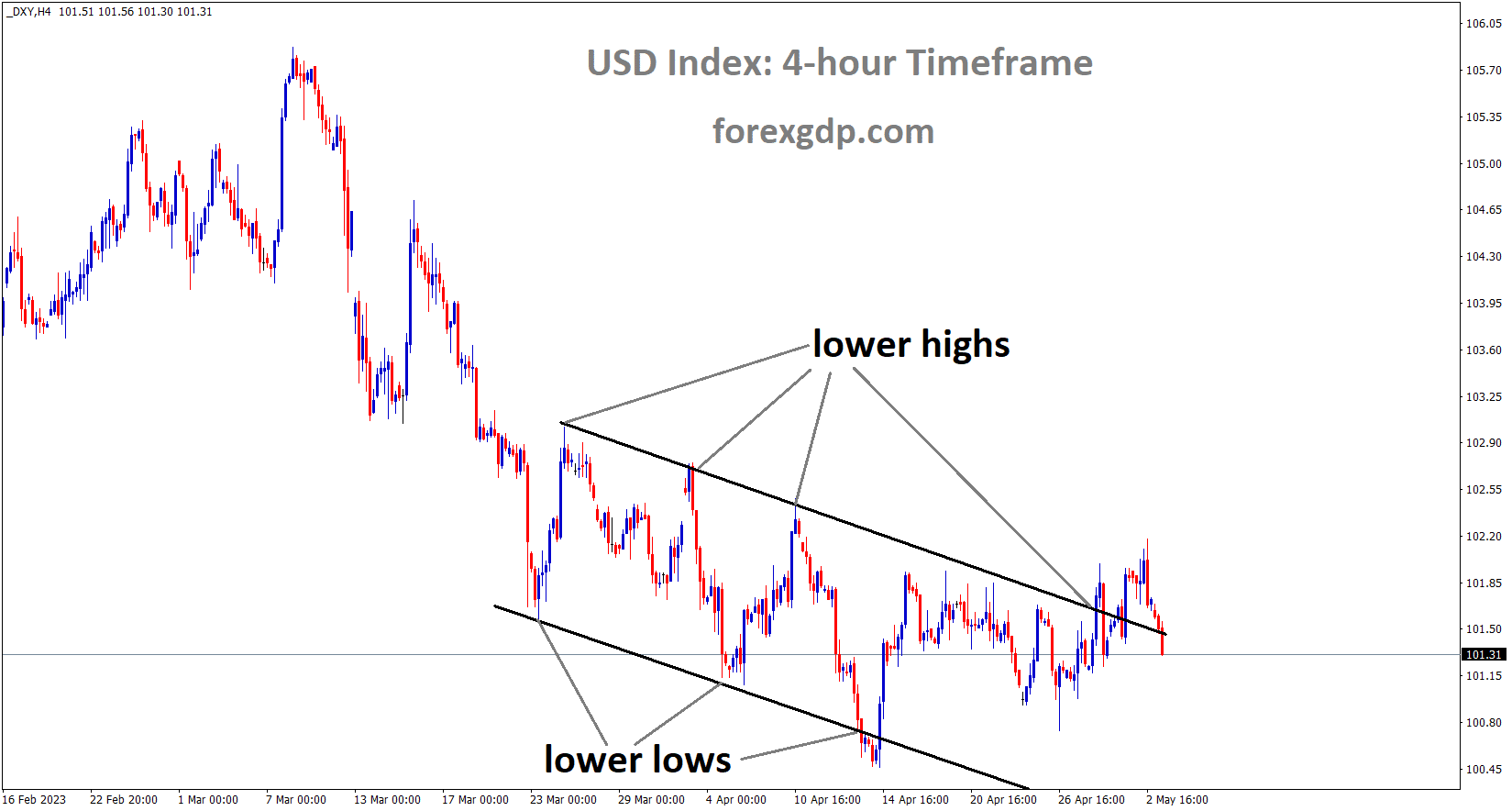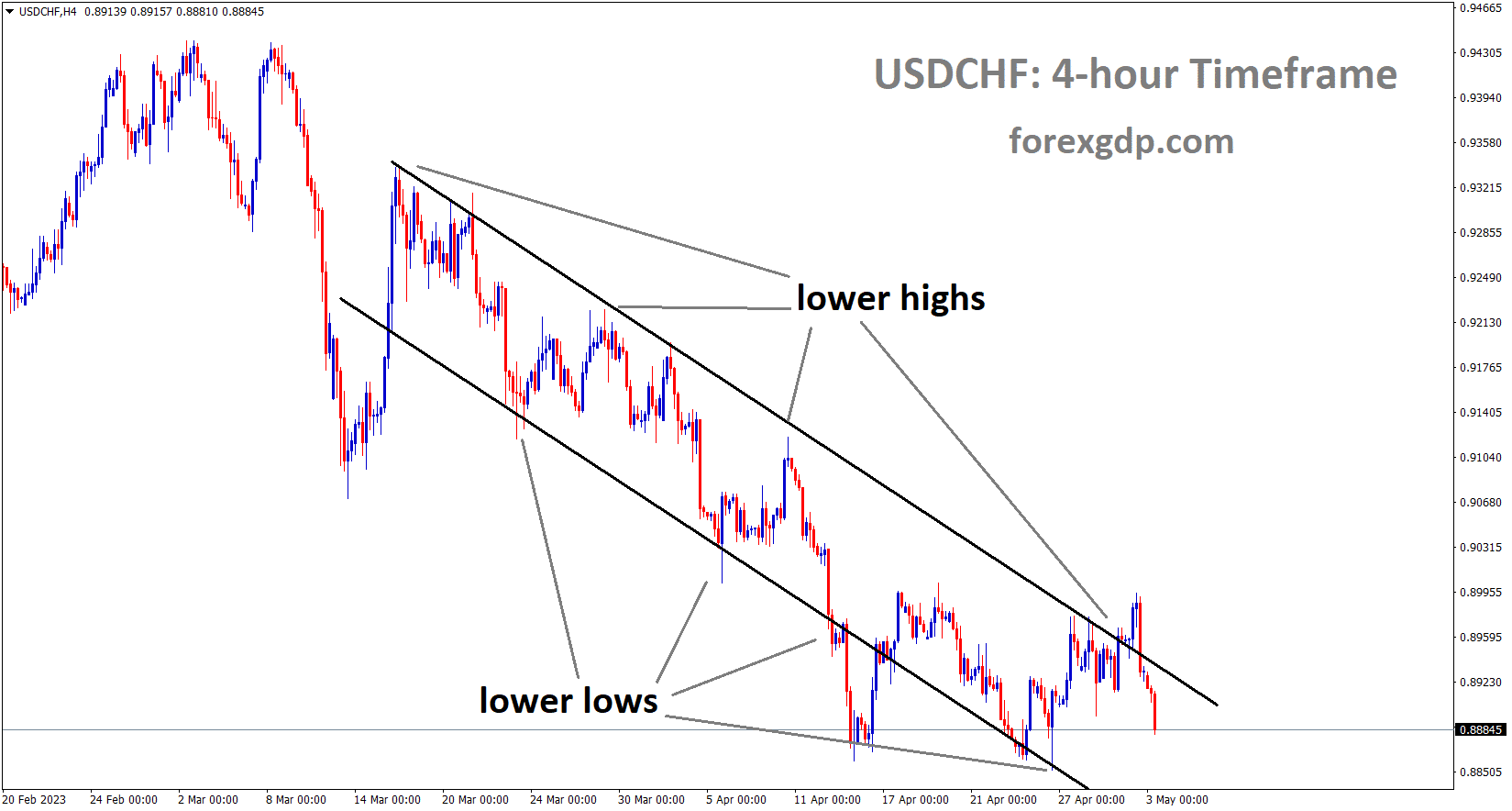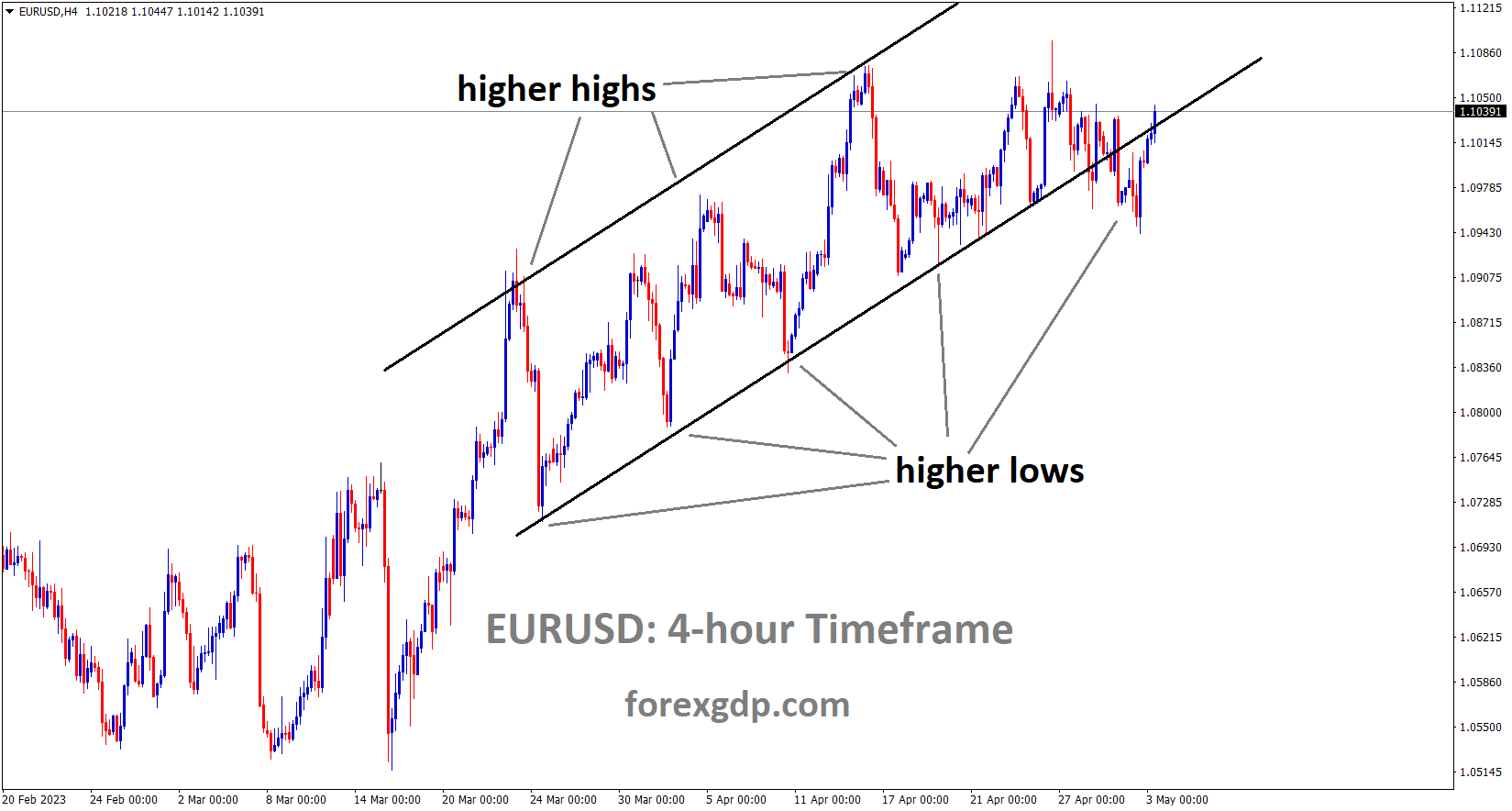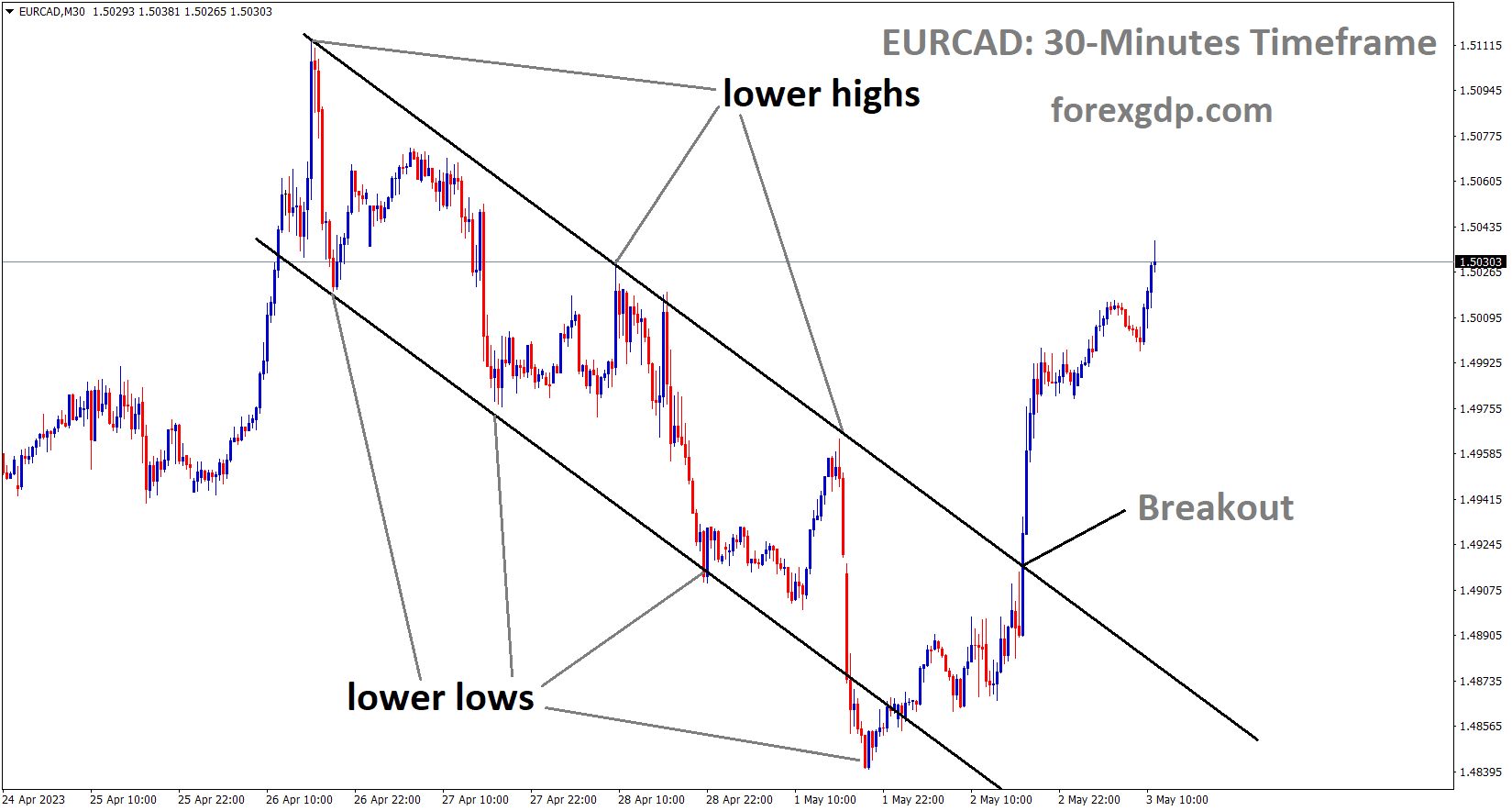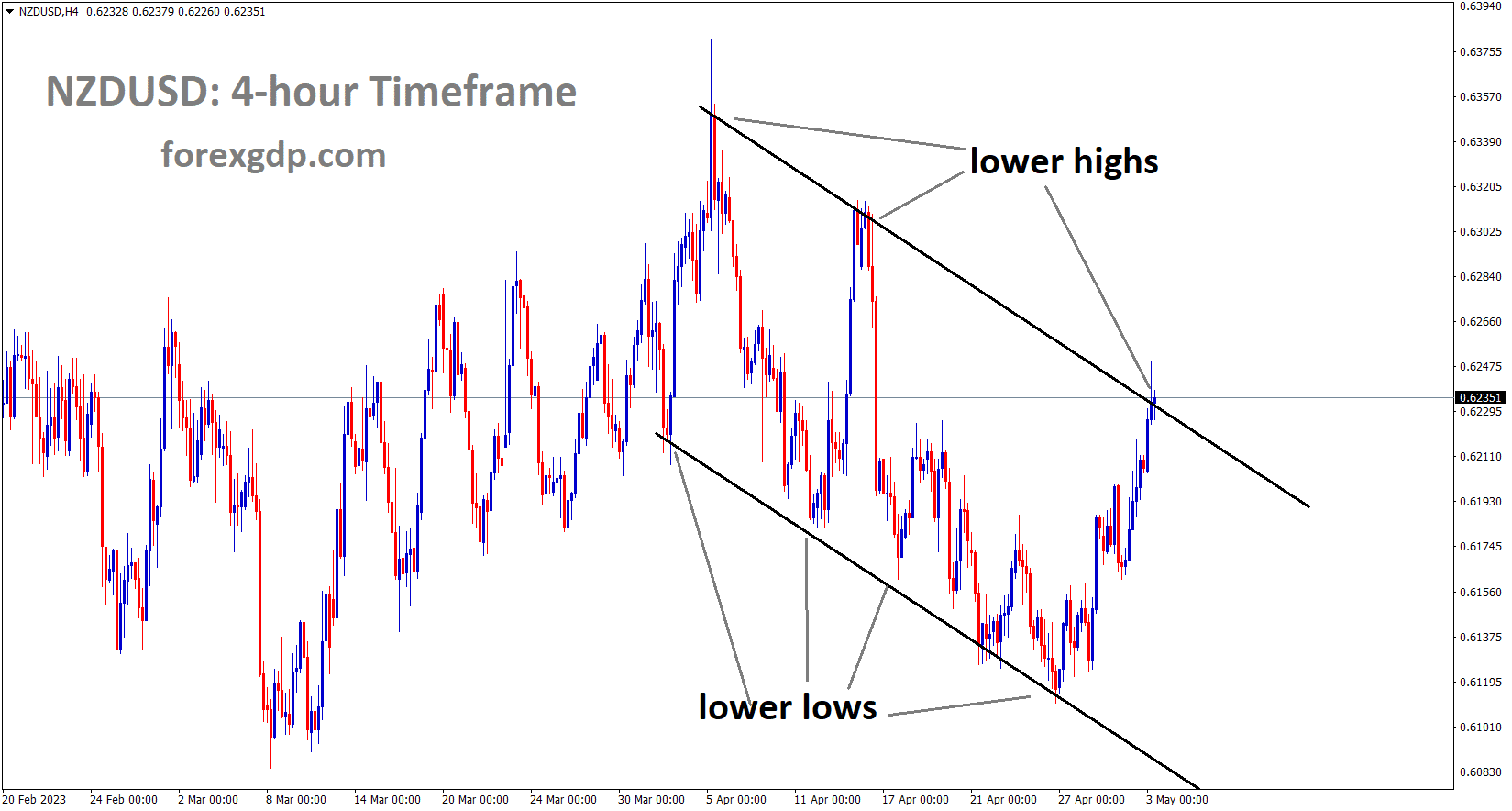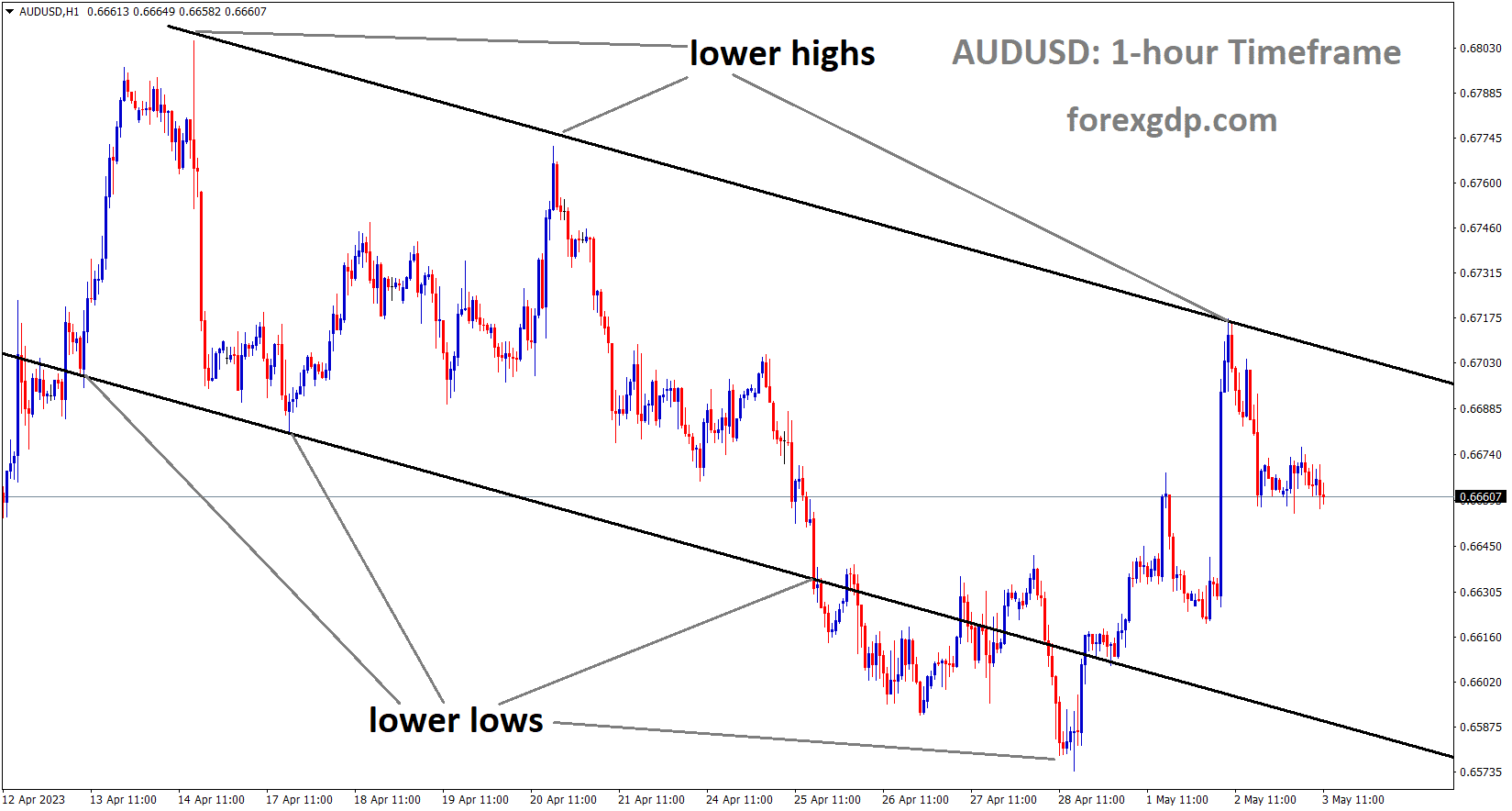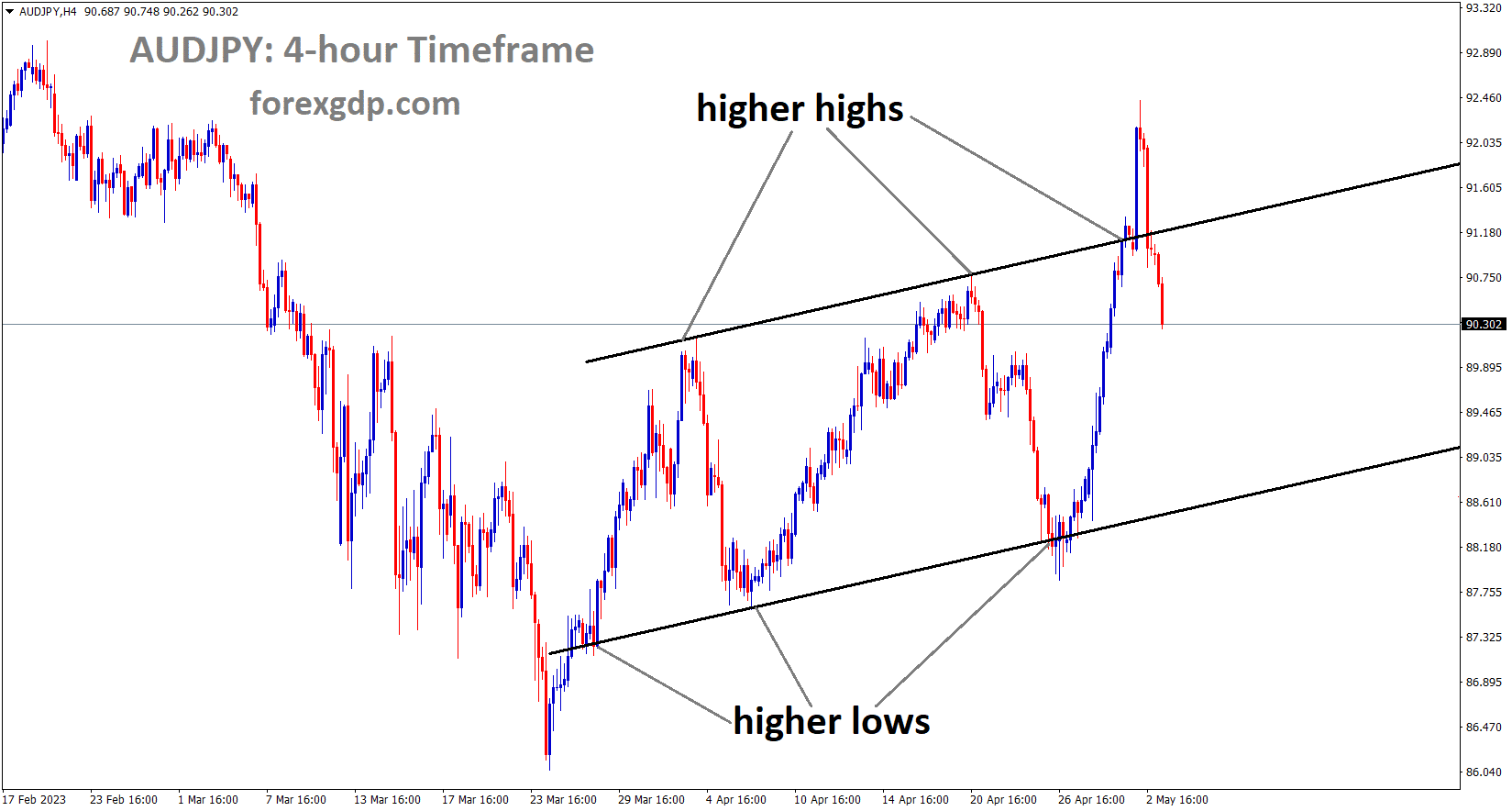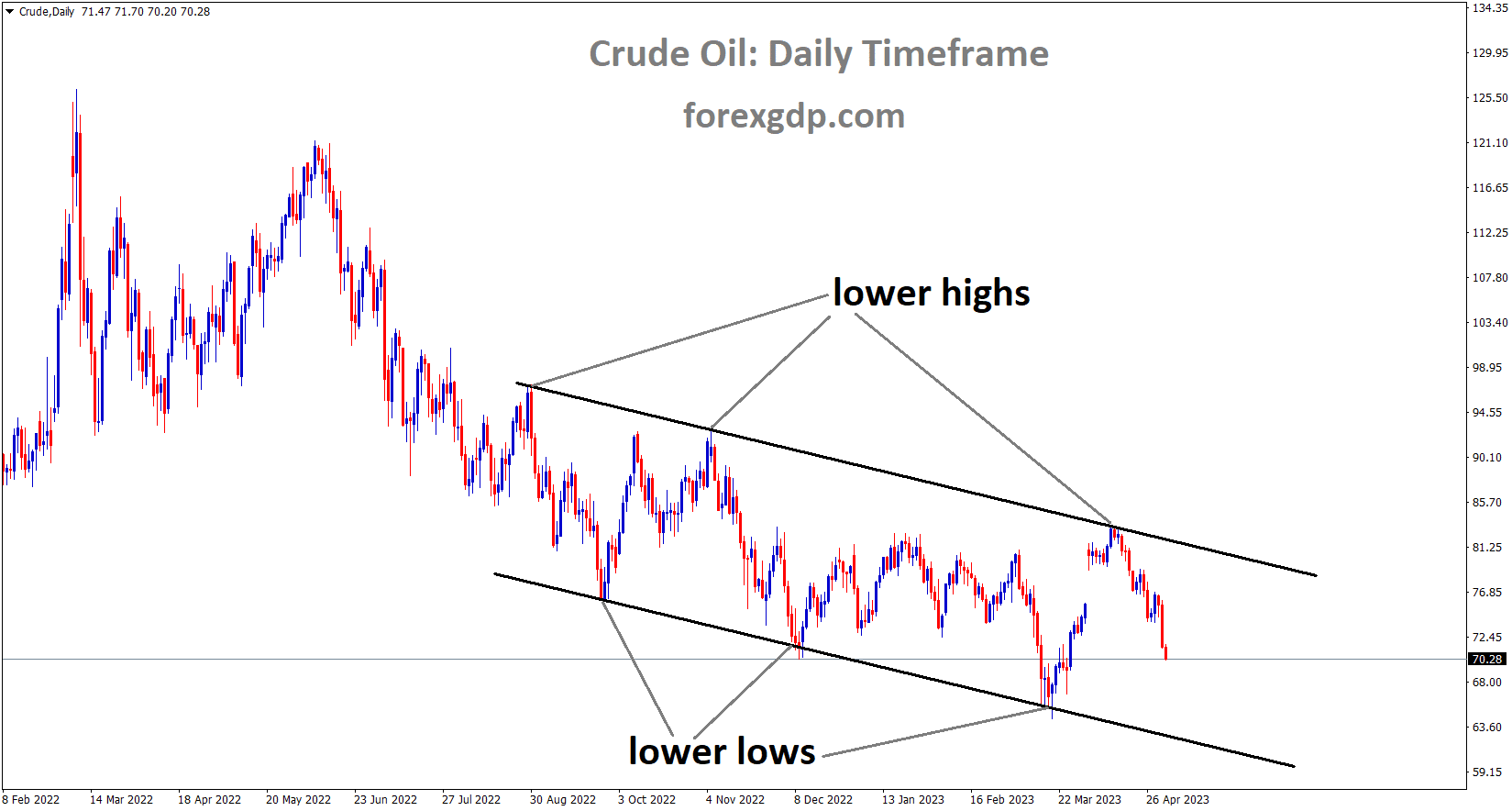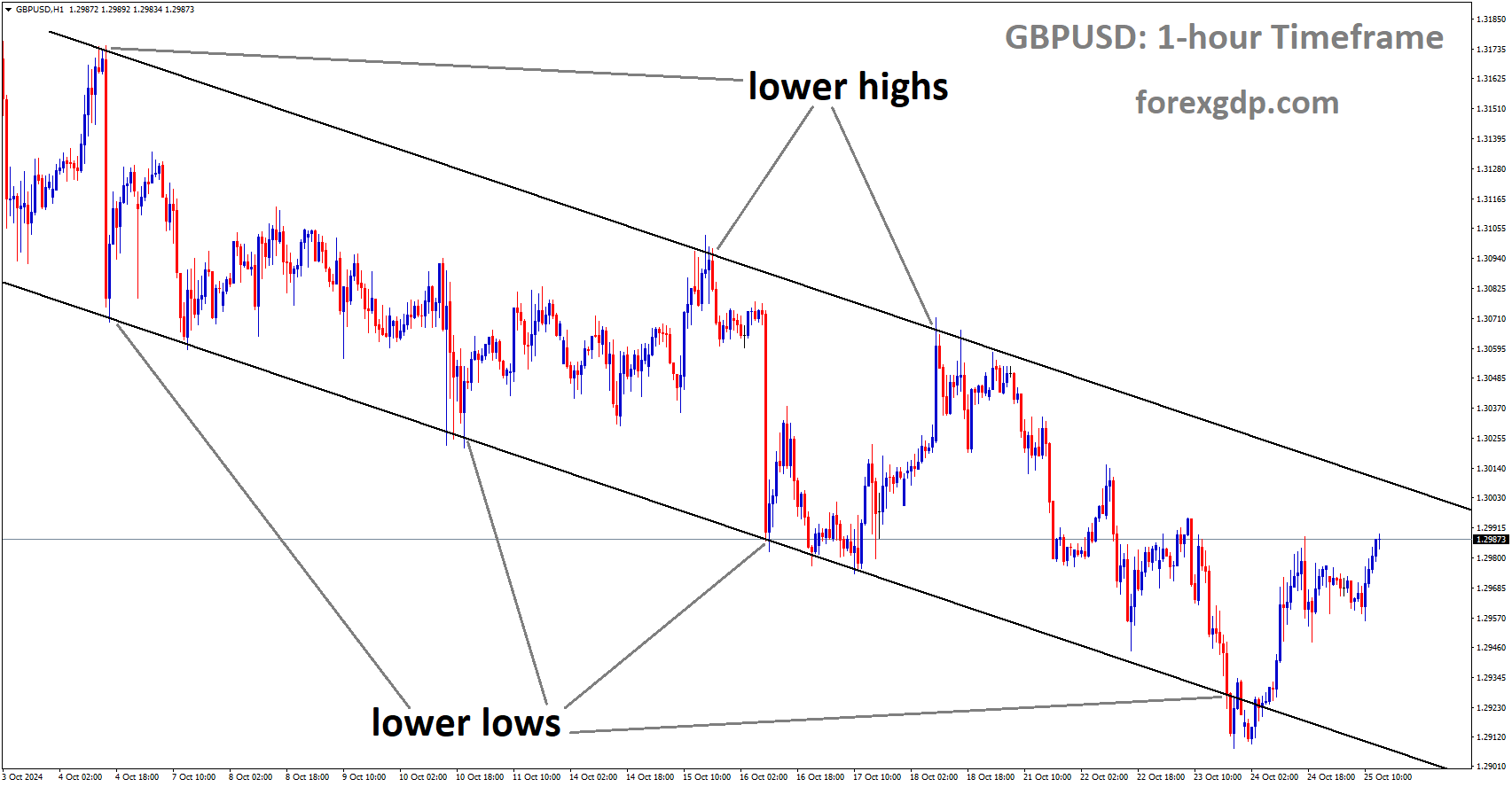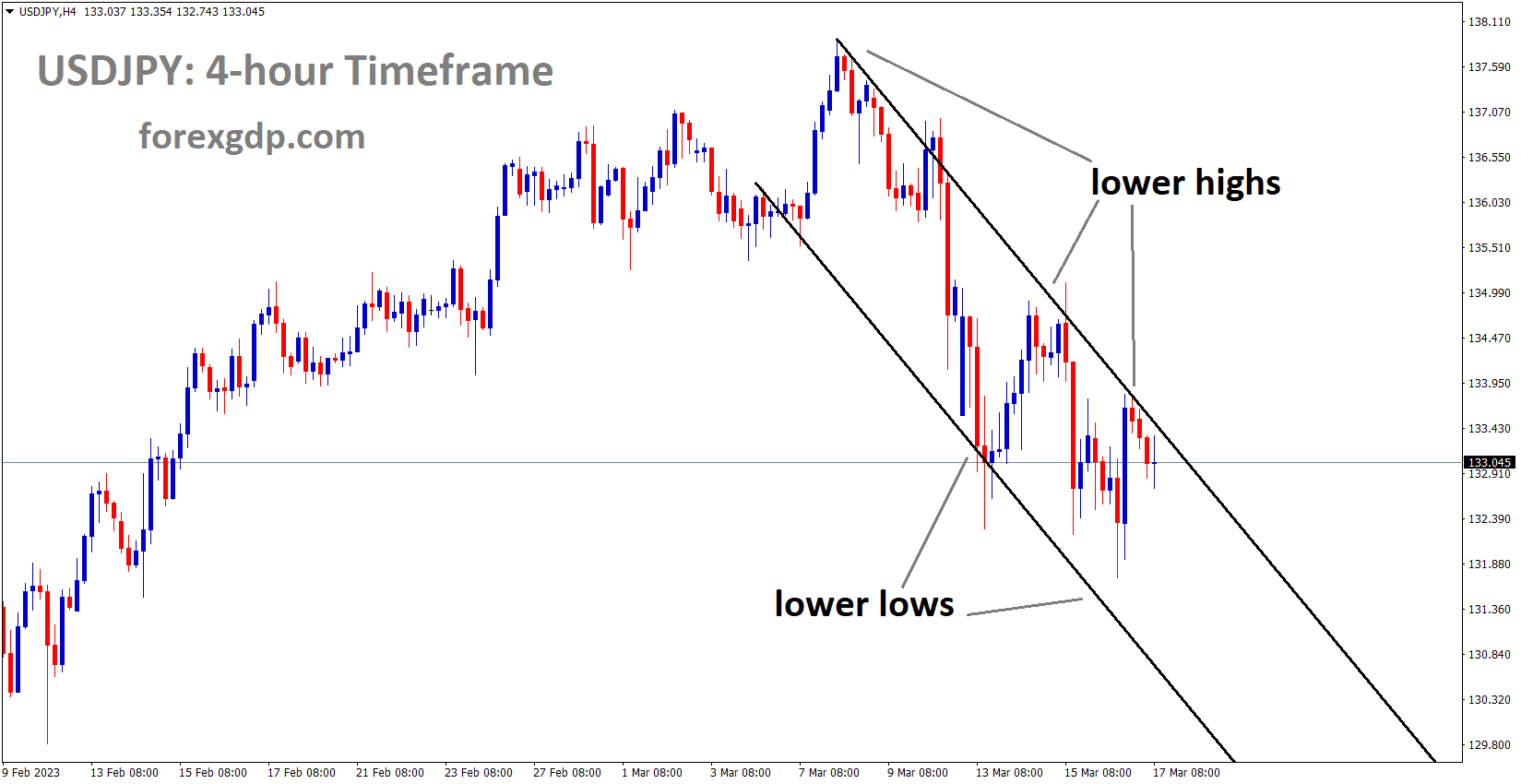GBPUSD Analysis
GBPUSD is moving in an Ascending channel and the market has rebounded from the higher low area of the channel.
By the end of 2023, the Bank of England wants to achieve a 5% terminal rate. Yesterday’s change in national house prices over the previous reading caused GBP to move more strongly against counter pairs. GBPUSD is awaiting a break from the prior levels before the FED meeting today, depending on the FOMC statement.
From a cable viewpoint, the British pound will be mostly influenced by USD factors this week, but today’s economic calendar includes some UK-specific data points, giving the Bank of England (BoE) more information before making its interest rate decision next week. After yesterday’s strong US ISM Manufacturing PMI for April and the UK’s bank holiday, the pound started the morning by clawing back some final gains. The upside was due to a higher-than-anticipated nationwide home price figure (see the calendar below) and a 5% terminal rate for the 2023 hike cycle, as indicated in the interest rate likelihood chart below from the BoE. However, markets are likely to stay rangebound ahead of tomorrow’s Fed rate decision. Later today’s UK manufacturing PMI could cause some short-term volatility.
GOLD Analysis
XAUUSD Gold price is moving in an Ascending channel and the market has rebounded from the higher low area of the channel.
The FOMC meeting is today, thus gold prices are ramping higher. The US government’s main priority is the unsolved debt ceiling issue.
Meetings are ongoing as the first Republic Bank merger with JP Morgan Chase&co is being processed.
With risk aversion reducing and Treasuries rising on lower yields, gold surged higher overnight, breaking above US$ 2,000 an ounce. Despite the market’s scrutiny of regional banks, which included the troubled First Republic Bank, at the beginning of the week, Wall Street ended lower. On Tuesday, the KBW bank index—which includes a number of the top regional banks—fell by 4.47%. Gold and Treasuries saw a bid as a result of the ongoing uncertainty over the US debt ceiling and the mounting worries about the macroeconomic outlook. Treasury rates decreased across the curve, with the 2-year note trading back below 4% after falling 18 basis points. Real 10-year Treasury yields were down 11 basis points and nominal 10-year Treasury yields were down 14 at the close in New York.
USD Index Analysis
USD index is moving in the Descending channel and the market has fallen from the lower high area of the channel.
The nominal yield less the inflation rate generated from Treasury inflation-protected securities at market prices is the actual yield. It follows that although there was little change in inflation expectations, returns on supposedly risk-free investments like US government debt improved. The market’s attitude also seemed to enhance the yellow metal’s perception as a safe haven. As traders assess the potential effects of today’s Federal Open Market Committee meeting, the US dollar has had a bumpy week thus far. Although the market is expecting a 25 bp increase, attention will be paid to the post-meeting press conference for information regarding the Fed’s position going forward.
USDCHF Analysis
USDCHF is moving in the Descending channel and the market has fallen from the lower high area of the channel.
This week, Swiss CPI figures are anticipated; the monthly CPI is predicted to rise by 0.50% compared to the prior reading of 0.20%. It is anticipated that annual CPI figures will decline to 2.8% from 2.9% previously.
This week, the US President and opposing Republicans will begin debating the US debt ceiling.
In the early Asian session, the USDCHF pair is battling to hold onto the key support level of 0.8920. Following a perpendicular decline in the US Dollar Index, the Swiss franc asset has come under intense selling pressure. As worries about the debt ceiling have diminished the appeal of the USD Index as a safe haven, the major is anticipated to decline even further towards the round-level support of 0.8900.
After a down Tuesday, S&P500 futures are quiet in Asia. Due to a lack of clarity on the Federal Reserve’s (Fed) interest rate policy, investors sold off their US equity positions. Additionally, the market is in a very risk-averse state because raising the debt ceiling will affect the US economy’s long-term prospects. After US Treasury Secretary Janet Yellen predicted that Treasury would run out of money for payments by early June, the US Treasury yields are under tremendous pressure. Concerns about the debt ceiling began when US President Joe Biden was reluctant to meet with US Senator McCarthy because House Republicans wanted the President to make significant budget cutbacks in opposition to extending the debt threshold. The 10-year US Treasury yields are currently close to 3.43% as of this writing.
Jerome Powell, the head of the Fed, is anticipated to increase interest rates by 25 basis points (bps), to 5.00–5.25%, according to the CME Fedwatch tool. Given that the US Manufacturing PMI is regularly showing contraction, the growth rate has slowed, and the labour market conditions are deteriorating, a second 25 basis point increase in interest rates is anticipated to be followed by neutral guidance.The inflation figures released on Friday will be closely followed on the Swiss franc front. The monthly Consumer Price Index is anticipated to increase by 0.5%, which would be faster than the 0.2% reading from the previous month. While the annual CPI is predicted to ease to 2.8% from the 2.9% reported previously.
EURUSD Analysis
EURUSD is moving in an Ascending channel and the market has rebounded from the higher low area of the channel.
The April month’s Euro Core CPI statistics came in at 5.6% instead of the 5.7% expected. Energy prices rebounded to 2.5% from -0.90% and Cost of Services increased to 5.2% from 5.1% before, resulting in YoY CPI data printing at 7.0%, higher than the previous month’s 6.9% reading. After the CPI reading remained steadfast, the ECB has the potential to raise rates by 25 basis points tomorrow.
In April, the core inflation rate for the Euro Area decreased marginally from March’s reading of 5.7% to 5.6%. Following a rise that began in June 2022 when core CPI was at 3.7% and excluded prices for energy, food, alcohol, and tobacco, core CPI, which includes these prices, decreased by 0.1%. The core number is still uncomfortably high, and inflation is stubborn despite indications that consumer spending is slowing and that circumstances are becoming tighter. The YoY inflation rate increased slightly from March’s 13-month low of 6.9 percent to 7.0 percent in April 2023. Energy prices increased by 2.5% compared to -0.9% in March, and service costs increased more quickly at 5.2% compared to 5.1% in March. Contrarily, inflation for these three categories of products decreased to 13.6% from 15.5% and for non-energy industrial goods to 6.2% from 6.6%. Consumer prices increased by 0.7% on a monthly basis, marking the third consecutive month of growth.
Given the varied economic conditions in the Euro region, the ECB has a difficult job. In recent months, policymakers at the European Central Bank have mostly used hawkish language in preparation for this week’s meeting. We also have the ECB Bank Lending Survey earlier this morning, which reinforced the expectation of a 25bps increase at Thursday’s meeting. According to the loan study, banks have significantly tightened their credit rules for both consumers and businesses, and Eurozone banks have noted a decline in the demand for credit from businesses. Consumers and households also felt the effects of this, as loan rejection rates rose and home loan demand fell sharply as consumers’ concerns about the state of the economy and general confidence persisted. The Bank Lending Survey at least gave some evidence that the economy is becoming more constrained as the effects of rate hikes start to spread. However, the ECB’s policymakers may still be considering the slight increase in the YoY inflation print.
EURCAD Analysis
EURCAD has broken the Descending channel in upside.
IMF Middle East, North Africa, and Central Asia are expected to slow down in 2023. Real GDP is expected to decline from 5.3% last year to 2.9% in 2023 and increase to 3.5% in 2024 for the Middle East and Central Asia. This effect is currently being felt throughout the Middle East and Central Asia due to global economic uncertainty.
According to Reuters, the International Monetary Fund stated on Wednesday that the Middle East, North Africa, and Central Asia regions’ economies will grow less slowly in 2023, highlighting the need to quicken structural reforms. Early on Wednesday, the International Monetary Fund (IMF) released its Regional Economic Outlook report, which predicted that “Real GDP growth in the Middle East and Central Asia is anticipated to decline to 2.9% in 2023 from 5.3% last year before rebounding to 3.5% in 2024.According to the research, growth will drop in the Middle East and North Africa region to 3.1% in 2023 from 5.3% in 2018 and in the Caucasus and Central Asian republics to 4.2% from 4.8% in 2017.
Jihad Azour, the regional director, concurred with the IMF study that there are many risks and significant uncertainties that are affecting the outlook for the region.”Some risks are global, some are related to the risk of fragmentation, but some of it is due to the fact that a certain number of countries have a high level of debt,” continued Azour of the IMF.In addition, IMF’s Azour noted that despite an anticipated severe slowdown in overall GDP this year, Saudi Arabia’s non-oil economic growth will be supported by government-led reforms and the expansion of private investment in new industries.
The need for expediting structural reforms to support potential growth and improve resilience is necessitated by the region’s strict monetary and fiscal policies and by the current financial climate. Egypt’s economy is expected to suffer, with growth expected to drop to 3.7% in 2023 from 6.6% in 2022 as a result of its need for an IMF financial assistance package of $3 billion over a 46-month period.
NZDUSD Analysis
NZDUSD is moving in a Descending channel and the market has reached the lower high area of the channel.
New Zealand Employment change was 0.80% as compared to the previous reading of 0.20%. The actual unemployment rate was 3.4% as opposed to the projected 3.5%. Newzealand After the news was announced, the dollar performed better against Counter pair. Following the reflection of job tightening, the RBNZ has increased rates.
After rising to close to 0.6250 in the Asian session, the NZDUSD pair has seen selling pressure. The Kiwi asset is anticipated to continue rising since the US Dollar Index is under significant pressure amid speculation that the US banking crisis was largely caused by the Federal Reserve’s (Fed) decision to raise interest rates. S&P500 futures have seen some increases during the Asian session, signalling a little improvement in investors’ risk appetite. The recovery might not last long because prudence is advised until the Fed decides on interest rates.According to Heather Boushey, a member of the US Council of Economic Advisers, the banking industry suffered as a result of interest rate increases by the Fed.
The USD Index is falling towards the key level of 101.63 as a number of economic indicators point to the Fed providing neutral interest rate policy. As businesses cut jobs, the US labour market has improved. In addition, JOLT’s Job Openings fell dramatically from the consensus estimate of 9.775M to 9.59M. In addition, ongoing declines in US manufacturing activity have heightened worries about an impending recession. This might compel the Fed to turn its attention away from the persistent inflation and towards US economic conditions. Positive New Zealand Employment has contributed to the Reserve Bank of New Zealand’s (RBNZ) decision to maintain its hawkish position on the New Zealand Dollar. The Employment Change came in at 0.8% greater than the 0.4% consensus and the 0.2% of the previous release. While the unemployment rate, which was reported at 3.4% in the previous quarter but was lower than the 3.5% estimates, has remained steady.
AUDUSD Analysis
AUDUSD is moving in the Descending channel and the market has fallen from the lower high area of the channel.
Head of economic analysis at the RBA According to Marion Kohler, the recent price increases and slight house consumption slowdown are both positive signs. Employment prospects will increase quickly along with the population. By year’s end, growing goods prices will return to normal. Not to worry about the cost of commodities as rising oil prices did not reach the predicted price.
According to Marion Kohler, the Reserve Bank of Australia’s head of economic analysis, early on Wednesday, a rapid recovery in population growth was a big surprise for the bank’s economic forecasts, driving up rents and causing a sooner-than-expected stabilisation in housing prices after months of declines.
The policymaker stated, speaking at an event in Perth, “Now that prices have stabilised in recent months, the pressure on spending from the housing crisis will be smaller than originally projected. Increased employment growth is anticipated as population growth accelerates. Have some faith that this year’s rate of increase in the price of products will slow. Energy prices will climb less than we anticipated six months ago.
AUDJPY Analysis
AUDJPY is moving in an Ascending channel and the market has fallen from the higher high area of the channel.
Australian retail sales increased to 0.40% in March from 0.20% the previous month. The RBA meeting yesterday stated in a statement that it was continuing to tighten measures to bring inflation back to between 2 and 3 percent. The Bank of Japan and RBA’s divergences cause the JPY to decline against other currency pairs. The yen fluctuated throughout vacations in China and Japan based on FED and Australian news.
Even if Australia’s Retail Sales for March managed to print optimistic statistics for March early Wednesday, the AUD/JPY remained depressed around 90.85, continuing the previous day’s losses close to the greatest levels in 2.5 months. In doing so, the quotation conveys a cautious attitude in advance of the most important data or occurrences. Holidays in China and Japan, worries about spillover from the baking sector, and hawkish central bank bias, supported by the Reserve Bank of Australia’s most recent surprise, all pose challenges to the cross-currency pair. Seasonally adjusted retail sales in Australia increased by 0.4% in March, exceeding market estimates of a 0.2% steady rise figure. The AiG Industry Index for Australia for March increased earlier in the day to 20.1 from -6.1, but the AiG Manufacturing and Construction PMIs for the same month declined to -20.2 and -12.4, respectively, from -5.8 and 5.6, in that order. Additionally, the S&P Global Services PMI for April increased to 53.7 from 52.6 preliminary estimates, and the Composite PMI increased to 53.0 from 52.2 preliminary estimates for the same month.
On a related page, recent selling of PacWest Bancorp and Western Alliance Bancorp shares sparked widespread banking concerns, which in turn put downward pressure on the price of the AUDJPY due to the pair’s role as a risk barometer. The S&P 500 Futures, which are only modestly offered, and Wall Street’s depressing close both reflect the current of risk aversion. Notably, the RBA board members shocked market participants the day before by increasing the Official Cash Rate by 25 basis points (bps) to 3.85%. The RBA not only declares a 0.25% rate increase, but also anticipates further tightening of the monetary policy. Nevertheless, the RBA updated its forecasts for GDP and inflation in its most recent policy document. Furthermore, RBA Governor Philip Lowe reiterated that additional tightening might be necessary to return inflation to the target range of 2-3% in a reasonable amount of time. The most recent difference in monetary policy outlook between the RBA and the Bank of Japan appears to be driving up the AUDJPY pricing elsewhere. However, it will be more crucial to keep an eye on the Australian trade figures, the April China Caixin Manufacturing PMI, and the risk catalysts for clear directions.
Crude Oil Analysis
Crude Oil price is moving in the Descending channel and the market has fallen from the lower high area of the channel.
Tuesday saw a 5.6% decline in oil prices, which caused the Canadian dollar’s value to decline. The primary export for the Canadian economy is oil. The fact that domestic data does not support the Canadian dollar favours the Bank of Canada’s decision to maintain stable interest rates.
One of the major currencies that performed the poorest over the last day was the Canadian Dollar. A similarly bad day for crude oil prices, with WTI falling by around 5.6% on Tuesday, was followed by weakness in the Canadian dollar. Since July 12th, that was the commodity’s worst 24-hour performance. Gains in oil following OPEC+’s unexpected cuts from a few weeks ago have been completely undone. In general, it was a risk-averse 24 hours on all international financial markets. During the Wall Street trading session, pessimism increased. The Nasdaq 100, S&P 500, and Dow Jones all decreased at the day’s end, by -0.92%, -1.17%, and -1.11%, respectively. The VIX market ‘fear indicator’, meanwhile, increased by above 10%. Fears of a faltering global economy most likely influenced market price movement. One thing is that after JPMorgan rescued First Republic Bank, the stocks of a few local banks fell. A crucial indicator of the labour market, meanwhile, kept moving in the wrong direction. The number of jobs per unemployed person in the US is currently 1.64, which is the lowest ratio since the end of 2021. It is still higher than average historically.
One of Canada’s main exports is oil. As a result, local monetary policy frequently depends heavily on the direction of the commodity. As a result, the Canadian Dollar was under pressure from a number of structural factors, including forecasts for slowing growth and future revenue from crude oil.
Don’t trade all the time, trade forex only at the confirmed trade setups.
Get Live Free Signals now: forexgdp.com/forex-signals/

